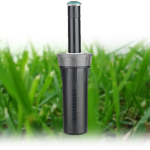Having the ability to remotely control your irrigation system can be more than useful when managing your garden’s watering needs. For example, it can enable you to provide extra waterings on an unexpected hot day (vital for users with delicate plants such as bonsai and seedlings) or cancel watering events when rain occurs (preventing water wastage and injurious overwatering).
Unfortunately, there are several issues with some of the remote-control systems that are available on the market. For example, many irrigation controllers are based on old technology that are not designed for remote access or remote control. In many instances, manufacturers of these controllers have “tacked on” devices to give some sort of remote access with some limited control. Even the more modern controllers that claim remote control, can be less than adequate and may not offer full remote access.
When choosing a system, it is important to be aware of the three main types of “wireless” remote control that are available – Bluetooth, Wi-Fi and RF (radio frequency). Each type has its own strengths and limitations:
- Wireless control is always limited in “strength”, so distance is a limiting factor.
- Bluetooth is good to connect your phone to a hands-free device which is within a few meters, but it is useless for direct remote control over 100 meters. Bluetooth is used by some modern tap timers and is OK for distances of tens of meters (i.e., for a small domestic garden).
- Wi-Fi has a “stronger” signal and can reach over 100+ meters (if there are no buildings or obstacles in the path). Longer path Wi-Fi signalling can use “repeaters” in a building or over a landscape. However, even with repeaters, control over kilometres is not practical.
- For Bluetooth and Wi-Fi devices installed in the landscape (i.e. expensive tap timers and solenoid actuators), the user must contend with batteries that need replacing and devices that could be stolen/vandalized.
- RF is a general type of remote control that is used for many applications including TV remotes, car keys, garage doors, model aircraft/cars and many more applications. It is short range (typically a few meters up to several kilometres) and is not normally used for irrigation controllers.
The most effective/powerful remote control for use in an irrigation controller is where the controller is connected to the internet and remote control is achieved via a smartphone/PC over the internet. The user can be anywhere in the world with internet access and can control their landscape irrigation system remotely. This remote access can be limited to just one user with some functionality or it can enable multiple user access with full control capabilities.
Unfortunately, there is a trap here for the unwary! If your controller uses internet access, then what happens when the internet is down?
Many systems that offer internet remote control for irrigation require constant internet access. Regrettably, this means that if the internet is down, then remote control is not possible and any control of desired waterings/scheduling cannot occur! Furthermore, most of the newer systems connect the user (normally via a special app on the user’s smartphone) to the manufacturer’s server and NOT directly to the user’s controller. This can be an issue if their server fails as you will not only lose remote access, but you could also lose all your scheduling data! Additionally, if the manufacturer decides to charge for the remote control then the client must pay a (normally annual) fee.
For commercial growers and those users with larger landscapes, a much more advanced and powerful landscape control system, such as the Easy Irrigation Control System, that does not need internet connection, nor a special smartphone app, should be a top consideration.
For more information about the Easy Irrigation Control System, please visit our website: www.easyirrigation.com.au




